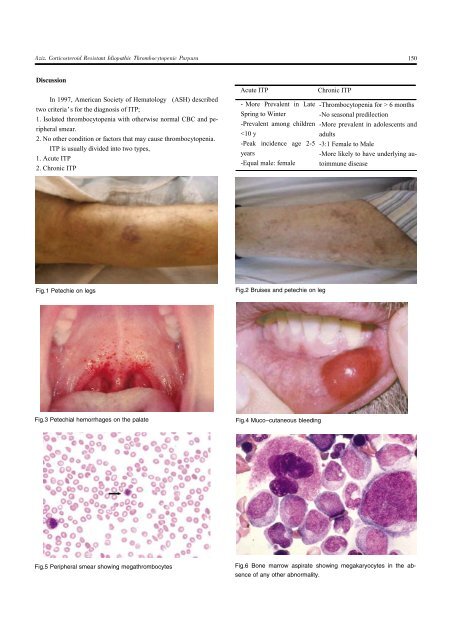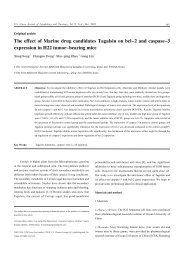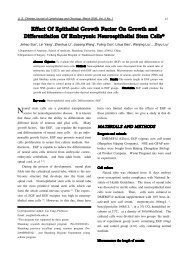Corticosteroid Resistant Idiopathic Thrombocytopenic Purpura ...
Corticosteroid Resistant Idiopathic Thrombocytopenic Purpura ...
Corticosteroid Resistant Idiopathic Thrombocytopenic Purpura ...
You also want an ePaper? Increase the reach of your titles
YUMPU automatically turns print PDFs into web optimized ePapers that Google loves.
Aziz. <strong>Corticosteroid</strong> <strong>Resistant</strong> <strong>Idiopathic</strong> <strong>Thrombocytopenic</strong> <strong>Purpura</strong><br />
150<br />
Discussion<br />
In 1997, American Society of Hematology (ASH) described<br />
two criteria 爷 s for the diagnosis of ITP;<br />
1. Isolated thrombocytopenia with otherwise normal CBC and peripheral<br />
smear.<br />
2. No other condition or factors that may cause thrombocytopenia.<br />
ITP is usually divided into two types,<br />
1. Acute ITP<br />
2. Chronic ITP<br />
Acute ITP<br />
- More Prevalent in Late<br />
Spring to Winter<br />
-Prevalent among children<br />
6 months<br />
-No seasonal predilection<br />
-More prevalent in adolescents and<br />
adults<br />
-3:1 Female to Male<br />
-More likely to have underlying autoimmune<br />
disease<br />
Fig.1 Petechie on legs<br />
Fig.2 Bruises and petechie on leg<br />
Fig.3 Petechial hemorrhages on the palate<br />
Fig.4 Muco-cutaneous bleeding<br />
Fig.5 Peripheral smear showing megathrombocytes<br />
Fig.6 Bone marrow aspirate showing megakaryocytes in the ab 鄄<br />
sence of any other abnormality.






